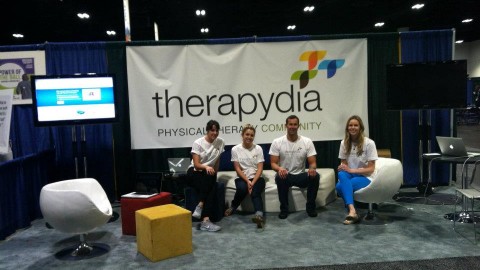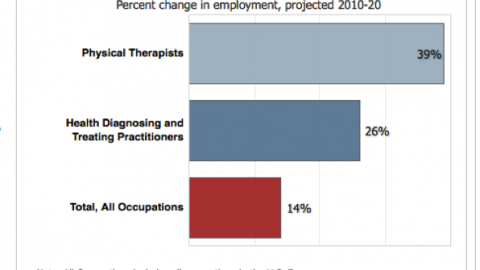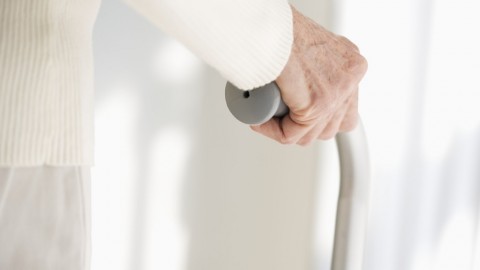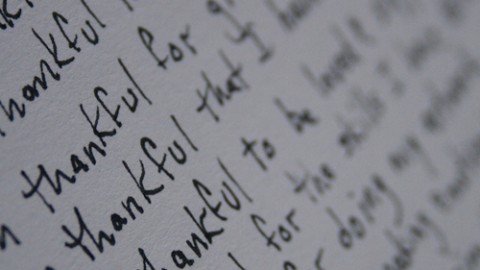Most of us are familiar with the term scoliosis from being tested for it during puberty. We know the term and that it means a curve in the spine but there is more to scoliosis than meets the eye. Below are some of the common questions that our physical therapists get about scoliosis:
Question: What is scoliosis?
Scoliosis is a term used to describe an abnormal curvature of the spine. This curvature is often described as a “C” or “S” shape.
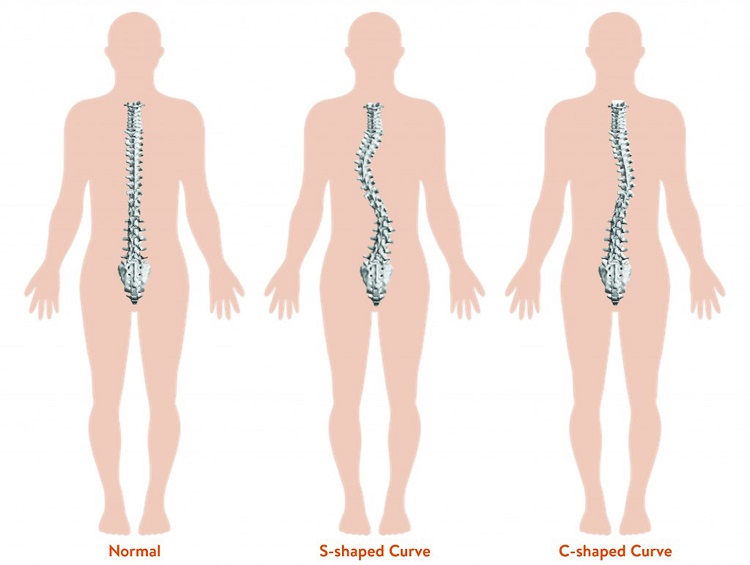
Image source Scoliosis SOS Clinic
There are two main categories of scoliosis – structural and nonstructural. These two categories of scoliosis are further differentiated based on the “cause” of the scoliosis.
Structural scoliosis
- Idiopathic scoliosis – This means the scoliosis occurred with no known cause and is the most common type of scoliosis. Idiopathic scoliosis typically occurs as a child develops; however, may also occur in adults. The most common type is adolescent idiopathic scoliosis (AIS), which develops in children ages 10-18.
- Degenerative scoliosis – This type of scoliosis is most prevalent among the elderly and is associated with uneven degeneration or aging of the discs, bones, and joints within the spine.
- Congenital scoliosis – This type of scoliosis is present at birth and is due to abnormal bone formation or separation in the spine.
- Neuromuscular scoliosis – This type of scoliosis often occurs in children due to atypical function of their brain or spinal cord, which impairs their ability to control the muscles in their trunk and spine. This is most commonly associated with conditions such as muscular dystrophy, cerebral palsy, spinal cord injury, and spina bifida.
Nonstructural or Functional scoliosis
- Muscle spasms – This type of scoliosis is resolved with correction of the muscle spasms.
- Leg length discrepancy – A correction of the leg length discrepancy, typically with a shoe-lift, resolves this type of scoliosis.
Question: What are the symptoms of scoliosis?
While there are multiple types of scoliosis, they often exhibit similar symptoms, which may include one or more of the following:
- Leaning to one side
- Having one shoulder or hip higher than the other
- Increased prominence of ribs on one side of the body, or increased “hump” on the back
- General appearance of unevenness
- An uneven walking pattern
- Pain in their back, ribs, shoulders, or hips
- Numbness, tingling, or weakness in their arms, back, or legs.
Question: How is scoliosis diagnosed?
Scoliosis is often suspected by your primary care after an Adam’s Forward Bending Test. This test requires the patient bending forward with knees straight and arms hanging towards the floor, which allows a physician to see asymmetries in the lower, mid, and upper back.
If a scoliosis is suspected, an X-ray of the full spine is needed to confirm a diagnosis. This X-ray allows your physician to see the type and severity of your curve.
Question: What types of scoliosis treatments are there? How long will treatment last?
When determining scoliosis treatment options, factors such as severity of the curve, age and sex are taken into account when determining how long treatment may last. The goal of scoliosis treatment is typically to reduce further progression of the curve and manage any symptoms you currently have.
The goal of most treatments is not to return your spine to a straighter alignment. Most people with scoliosis undergo a period of observation to see if their curvature is stable or if it progresses prior to determining a course of treatment. In more severe cases, bracing or surgical intervention may be needed.
Question: Will I need surgery?
Depending on the severity of your scoliosis, surgery may not be necessary. In many cases of scoliosis, the symptoms and curvature of the spine respond well to physical therapy- meaning that surgery can be avoided.
The goal of physical therapy when treating scoliosis is to reduce pain, educate patients on movement patterns and body mechanics that decrease stress on the spine, promote lifelong exercise for spine health, help patients develop a self-sufficient routine to reduce the frequency/severity of pain, and improve musculoskeletal symmetry through exercises designed to help with strength, breathing mechanics, and posture. All physical therapy sessions are custom tailored to a patient’s age, type of scoliosis, and severity of scoliosis.
If you, or someone you know, has scoliosis and is having back, hip, or shoulder pain; difficulty with walking; or difficulty completing their daily activities, they may benefit from a physical therapy evaluation. Similarly, if you have scoliosis and want to learn safe exercise or lifting techniques you may benefit from physical therapy. Call Therapydia today to book an appointment and see how physical therapy can benefit you.



